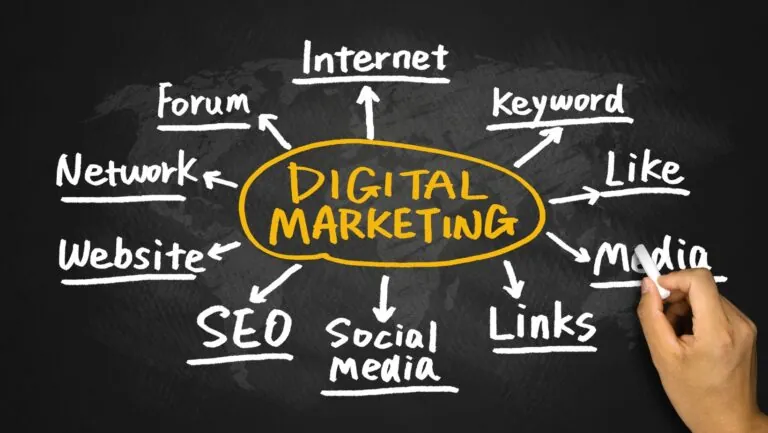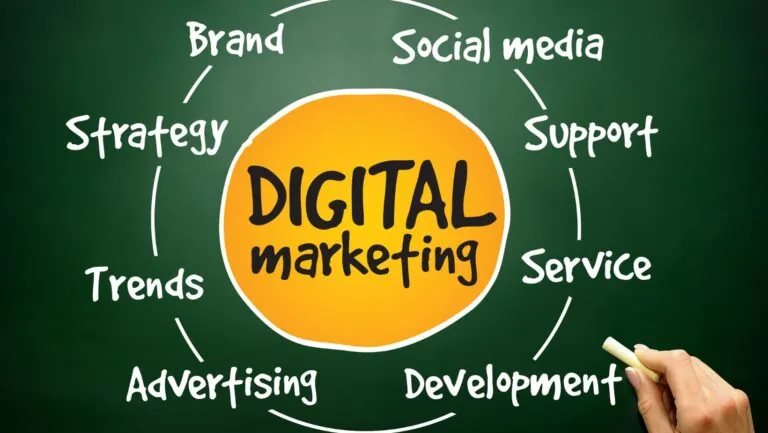Table of Contents
ToggleSocial media has transformed the way people connect and communicate. From its humble beginnings as a platform for sharing thoughts and photos, it has evolved into a powerful tool that shapes opinions, drives trends, and influences behavior. Today, social media development plays a crucial role in how businesses engage with their audiences and how individuals express their identities.
As technology advances, so do the strategies and features that enhance user experience. Companies are constantly adapting to new algorithms, user preferences, and emerging platforms. Understanding the dynamics of social media development is essential for anyone looking to harness its potential for personal or professional growth. This article explores the key trends and innovations that are shaping the future of social media, providing insights into how it continues to evolve in an ever-connected world.
Overview of Social Media Development
Social media development encompasses the creation, evolution, and optimization of platforms enabling user interaction and content sharing. This development integrates various technologies, trends, and user behaviors that shape how individuals and businesses connect.
Key Components of Social Media Development
- Platform Evolution
Social media platforms, like Facebook, Twitter, and Instagram, have transformed significantly since their inception. Features have adapted over time to enhance user experiences and meet changing demands.
- User Engagement Strategies
Effective social media development involves engaging audiences through interactive content. Gamification, live streaming, and user-generated content enhance participation and ensure lasting connections.
- Algorithm Updates
Algorithms dictate visibility and engagement levels on social media. Regular updates reflect user preferences, necessitating strategies for content optimization that ensure relevance and discoverability.
- Mobile Optimization
Mobile devices dominate social media usage. Development focuses on responsive design and user-friendly interfaces for seamless navigation across smartphones and tablets.
- Data Analytics
Analyzing user behavior and engagement metrics informs social media strategies. Utilizing tools for tracking interactions and preferences helps optimize content and enhance return on investment.
- Community Management
Building and nurturing online communities fosters loyalty and advocacy. Successful social media development prioritizes responsive communication and active engagement with followers.
- Emerging Technologies
Technologies like augmented reality (AR) and virtual reality (VR) are influencing social media experiences. Their integration facilitates innovative marketing strategies that capture audience attention.
Impact of Social Media Development
Social media development profoundly influences communication styles and marketing tactics. Businesses leverage these platforms for brand promotion, while individuals express their identities and connect with like-minded communities. As trends evolve, ongoing adaptation ensures relevance in the rapidly changing digital landscape.
Key Milestones in Social Media Evolution

Social media evolution features distinct milestones marking its progress. Understanding these key developments provides insight into the current landscape of digital communication.
Early Beginnings
Social media emerged in the late 1990s with platforms like Six Degrees and Friendster. Six Degrees, launched in 1997, allowed users to create profiles and connect with friends. Friendster followed in 2002, focusing on social networking for maintaining existing friendships. These early platforms laid the groundwork for subsequent innovations, highlighting the potential of online interactions and community building.
Rise of Major Platforms
The mid-2000s saw the rise of major platforms that shaped social media’s trajectory. Facebook, launched in 2004, revolutionized online interactions with its extensive user profiles and news feeds. Twitter, introduced in 2006, introduced real-time microblogging, capturing the importance of brevity in communication. Instagram, launched in 2010, emphasized visual content, driving engagement through images. These platforms not only expanded user bases but also established new norms for sharing content and engaging with audiences, marking significant milestones in social media development.
Impact of Social Media on Society
Social media profoundly affects society in various ways. It reshapes communication patterns, influences business practices, and alters marketing strategies.
Communication and Connection
Communication relies heavily on social media platforms. Users share information instantly, fostering global connections. They connect with friends, family, and new acquaintances, regardless of geographic barriers. Social media encourages dialogue, allowing for a diversity of opinions and viewpoints. It amplifies voices that might remain unheard in traditional media. Platforms enable real-time interactions, enhancing engagement and building communities around shared interests.
Influence on Business and Marketing
Business practices significantly change due to social media influence. Companies leverage platforms for targeted advertising, reaching specific demographics effectively. Marketing strategies now focus on social engagement, utilizing user-generated content to build brand loyalty. Consumers interact directly with brands, seeking transparency and responsiveness. Analytics from social media insights guide businesses in tailoring their offerings. Social proof through reviews and testimonials fosters trust, directly impacting purchasing decisions.
Challenges in Social Media Development
Social media development faces several challenges that can hinder growth and user trust. Key issues include privacy concerns, security threats, misinformation, and content moderation complexities.
Privacy and Security Concerns
Privacy and security concerns represent a significant challenge in social media development. Users often worry about data breaches, unauthorized access to personal information, and the misuse of their data for targeted advertising. Platforms must comply with stringent regulations, such as the General Data Protection Regulation (GDPR) in Europe and the California Consumer Privacy Act (CCPA) in the U.S. Failure to protect user data can result in hefty fines and loss of customer trust. Companies like Facebook and Twitter continuously invest in cybersecurity measures and privacy frameworks to safeguard user information and enhance transparency about data usage practices.
Misinformation and Content Moderation
Misinformation and content moderation present ongoing challenges for social media platforms. The rapid spread of false information can influence public opinion, disrupt elections, and spread harmful content. Platforms like YouTube and Facebook face criticism for their handling of misinformation while striving to strike a balance between free speech and responsible content sharing. Developing effective algorithms and employing human moderation teams become essential for identifying and addressing harmful content. Many platforms also collaborate with fact-checking organizations to enhance credibility and ensure accurate information dissemination.
Future Trends in Social Media Development
Social media development continues to evolve, driven by emerging technologies and shifts in user behavior. These factors shape how platforms operate and how users interact within them.
Emerging Technologies
Emerging technologies like artificial intelligence (AI), augmented reality (AR), and virtual reality (VR) will redefine user experiences on social media platforms. AI algorithms will enhance targeted advertising, allowing businesses to connect with users based on their preferences and behaviors. AR and VR tools will enable immersive experiences, transforming how users engage with content, from virtual try-ons for products to interactive 3D storytelling. Blockchain technology will also play a significant role, enhancing transparency and security in transactions and interactions on these platforms. These technologies will drive innovation, making social media more engaging and reliable.
Shifts in User Behavior
Shifts in user behavior will significantly influence social media development. Increased demand for authenticity and transparency will prompt businesses to adopt genuine engagement strategies rather than traditional advertising. Users are gravitating toward platforms that prioritize community building and meaningful interactions over curated content. The rise of ephemeral content, such as stories, will continue to appeal, reflecting users’ desire for real-time updates and spontaneity. Additionally, older generations are increasingly adopting social media, leading to diverse audiences that brands must address. Trends show that users prefer platforms offering privacy-focused features, making data protection essential for successful engagement.
Social media development continues to shape the way individuals and businesses interact in an increasingly digital world. The evolution of platforms and user preferences demands constant adaptation to stay relevant. As emerging technologies redefine user experiences and preferences shift towards authenticity and community engagement, the landscape of social media will keep transforming.
To thrive in this dynamic environment, organizations must embrace innovation while addressing challenges like privacy and misinformation. By leveraging data analytics and fostering genuine connections, they can navigate the complexities of social media effectively. The future promises exciting opportunities for those willing to evolve alongside these platforms.








